Seoul’s Euljiro area was shaped by Korea’s rapid industrialization during the latter half of the 20th century. Like a time capsule, the neighborhood retains many factories, workshops, and stores from its halcyon years. But it is also home to hip, understated places attracting young people. This juxtaposition of old and new is transforming Euljiro’s identity.
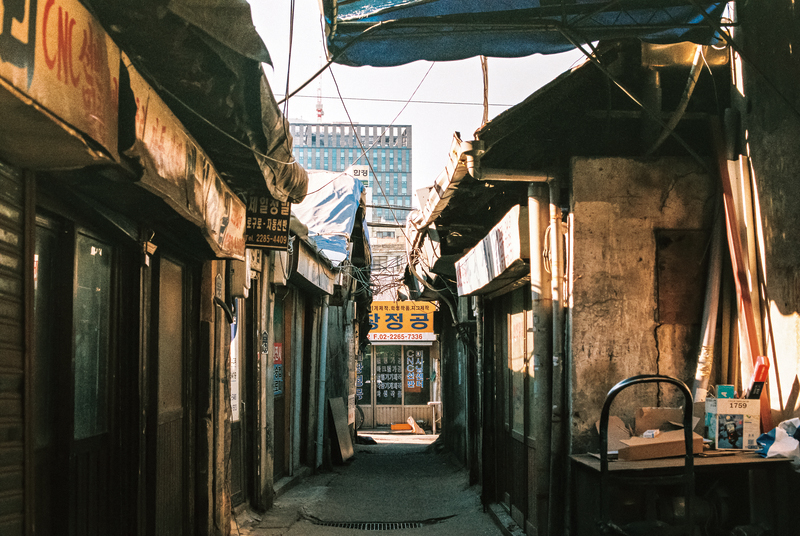
Euljiro’s maze-like alleyways are lined with small workshops, factories, and stores that date back to the 1950s and 1960s. Euljiro 3-ga’s old, low-rise buildings reflect this cityscape best.
© Seol Dong-ju
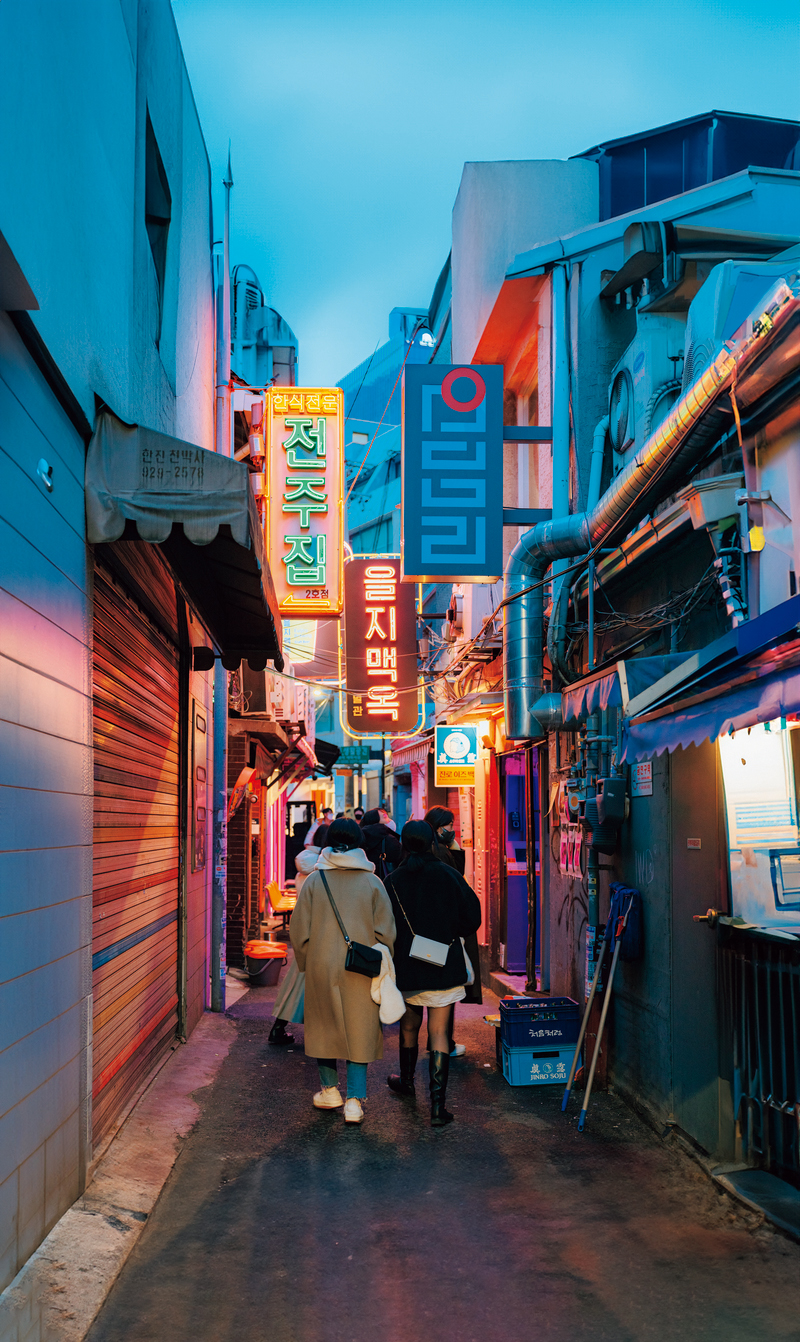
At dusk, Euljiro 3-ga’s alleys come alive with young crowds flocking to old eateries that have become hotspots. Euljiro is home to many longstanding establishments that have shaped its history.
© Seoul Tourism Organization
Occupying central Seoul, the Euljiro area is packed with small timeworn factories, workshops, and hardware stores. Its subdued, narrow lanes are filled with motorcycles whizzing by, the sound of welding, the acrid smell of grinding metal, and the purposeful bustle of people going about their livelihood. This contrasts with other popular areas in Seoul, such as Gangnam, Myeong-dong, and Hongdae, which are known for their wide, neon-lit roads packed with retail, dining, and drinking establishments for all different budgets.
Yet, Euljiro’s distinctive ambience and vintage charm, the vestiges of its past etched in its byways and buildings, draw in young people all the same. Spreading the word on social media, they often attach “#hotspot” to posts they make from this neighborhood.
EPICENTER OF MANUFACTURING
During the Japanese occupation of Korea (1910– 1945), Seoul’s administrative districts were reorganized and its center named Hwanggeumjeong. Blossoming textile, food, and printing industries turned the area into a commercial and industrial hub. Following Korea’s liberation, the area was renamed after Eulji Mundeok, a famous general of the Goguryeo Kingdom (37 BCE–668 CE).
After the Korean War (1950–1953), much of Seoul laid in ruins, but people from all corners of the country still flocked to the capital, hoping to eke out a living during its wide-scale reconstruction. At night they curled up in the cramped shanties of Euljiro, and during the day sold whatever they could on the streets.
Machinery and tools from the U.S. Army and scrap metal that was rendered obsolete after the war ended up in Euljiro. Local merchants gradually acquired the expertise to repair or manufacture machinery themselves, gaining Euljiro a reputation as a place where expert craftsmen could make practically anything from scratch. People even joked, “You could build your own tank in Euljiro,” a testimony to the advanced manufacturing skills that had evolved there.
The area flourished. Alleyways turned into light-industry corridors producing an array of items, including electrical and electronic goods, metal, glass, light fixtures, pottery, and furniture. The 1970s saw the peak of Korea’s rapid urbanization and industrialization, which forever changed the course of the nation. Businesses in Euljiro were said to be flooded with so many customers every day that the owners barely had time to count their money.
By the late 1980s, government officials decided that manufacturing electric appliances and electronics — the area’s lifeblood — was unsuitable for urban centers. This, in addition to deteriorating residential housing, prompted the government to designate Euljiro for redevelopment. Seoul was quickly turning into a forest of office buildings and apartment complexes, and with three subway lines crisscrossing through Euljiro, its convenient location made it an inviting target for city planners and property developers.
Business owners and residents were told to relocate, but negotiations stalled over the division and ownership of land lots, driving up property prices and putting a hold on Euljiro’s redevelopment.
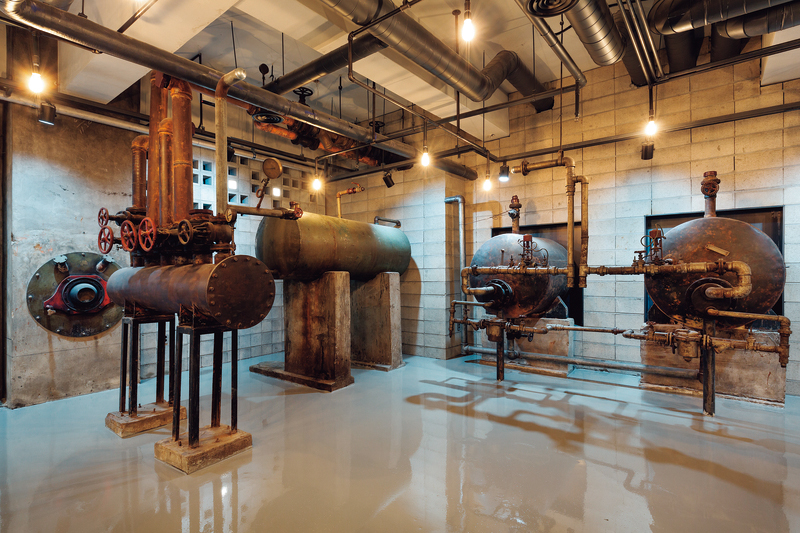
Sewoon Plaza was the center of the electronics industry for decades. After undergoing a complete makeover, it reopened in 2017. An underground boiler room was transformed into Sewoon Basement, a multifunctional space used for classes, exhibitions, and workshops.
© Roh Kyung
RESPECT FOR TRADITION
Among the area’s customers were young creatives who needed materials for their art, film, and theater projects. As craftsmen filled orders, they would interact with the artists, discussing specifications, giving technical advice, and even providing consultation, thereby serving as quasi-collaborators on their projects.
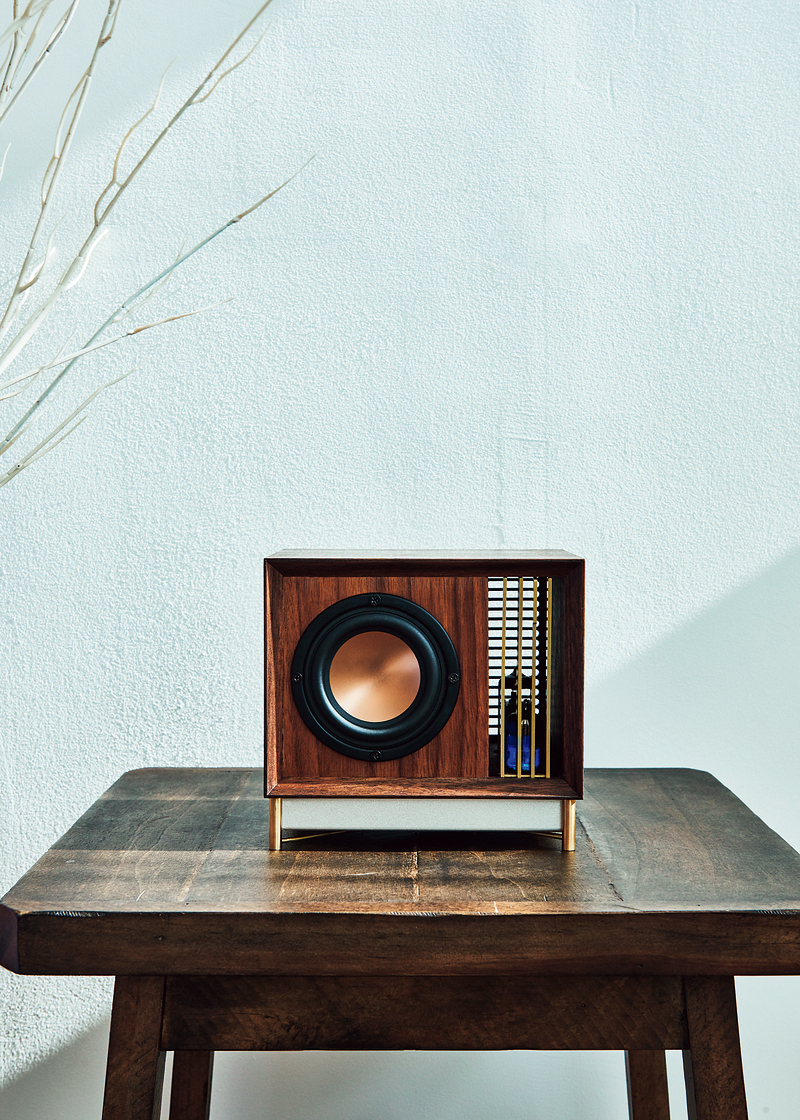
Euljiro’s industrial craftsmen and their technical skills help realize the creative ideas of young artists. The photograph shows KNOT, SOUND ABOVE, a vacuum tube Bluetooth speaker launched by above.studio in collaboration with Ryu Jae-ryong, a veteran electronic controls and sound systems engineer. In its design, Euljiro-based above.studio pursues formative beauty based on logical processes.
© above.studio
It was these young artists who engendered a wind of change in the deteriorating neighborhood, shining new light on its intrinsic value. From the mid-2010s, those looking for a studio, exhibition space, or performance venue were drawn to Euljiro. Affordable rents made it an attractive choice, but a bigger reason was the particular atmosphere d by its aging buildings, labyrinthine alleyways, and the energy of laborers toiling away.
The artists all shared a commitment to creating spaces that did not clash with the surroundings. Rather than opting for a complete makeover to suit studios or exhibition venues to their purposes, most chose to preserve the original interiors.
This consideration paired nicely with the budding retro trend. New occupants refrained from tearing down brick façades and discarding old furniture, in vogue decades ago, and in most cases, they even retained the signboards of the old stores and factories. This respect for Euljiro’s place in history and the desire to preserve its character allowed for a harmonious balance of new and old.
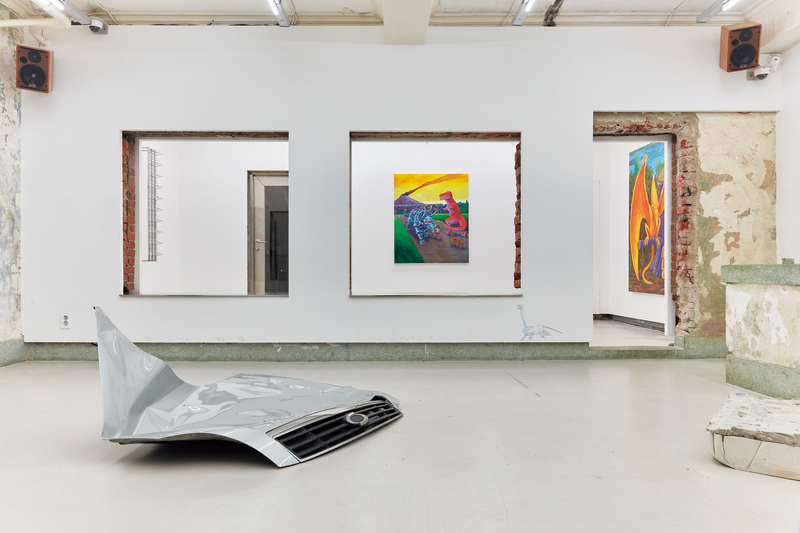
N/A Gallery, which opened in 2018, is one of Euljiro’s hidden gems. Tucked inside an alleyway, it sits between blacksmith workshops in Euljiro 4-ga. Despite not having a sign, the gallery is at the forefront of the local art scene. Photographed here is the exhibition Dinosavr by Yesul Kim and Rémi Lambert, held earlier this year.
© N/A Gallery
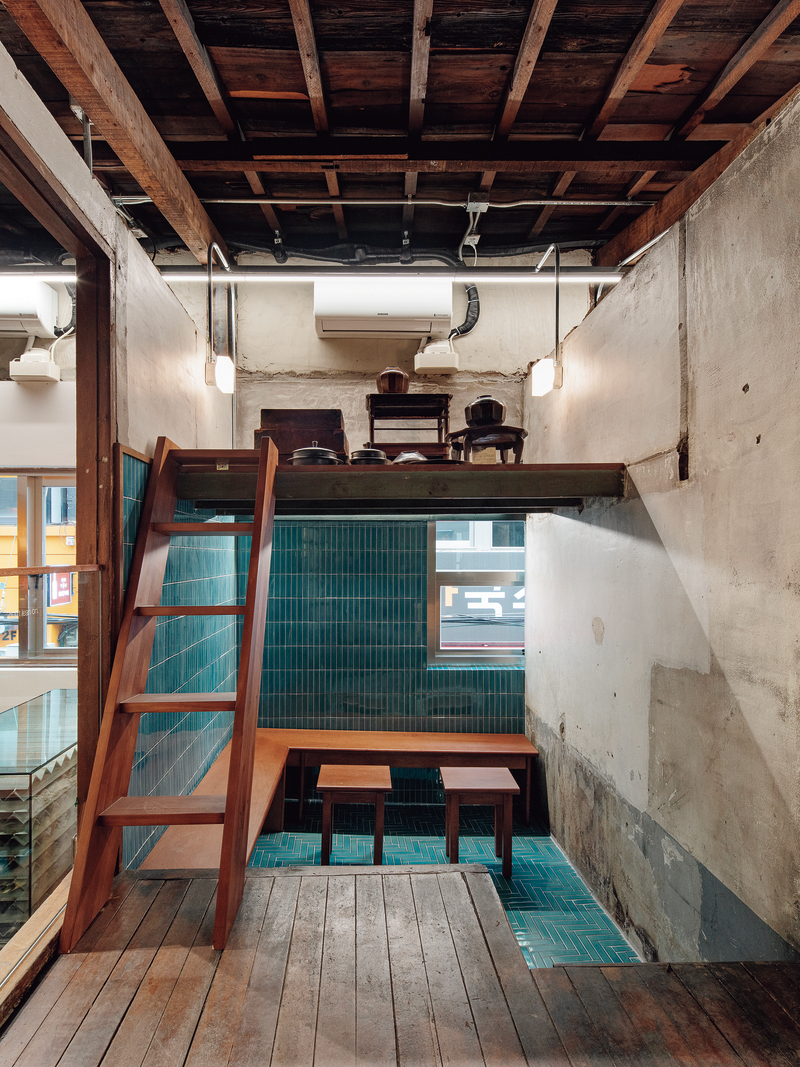
The inside of Eulji Darak, established by KOLON FnC in 2020, was conceptualized as a multi-brand flagship store. LimTaeHee Design Studio prioritized blending in with the surrounding area. The 20-year-old building’s original exterior was preserved while its interior was decorated with old furniture, decor, and flooring.
Courtesy of LTH; Photo by Yong Joon Choi
BIRTH OF “HIPJIRO”
The artists who settled in Euljiro boldly pursued innovative ideas, even if it meant that their exhibitions or performances weren’t financially lucrative. They engaged in artistic experimentation, integrating the area’s geographical and architectural characteristics into their work. This is why certain events staged in Euljiro are referred to as “site-specific content.”
The art and culture projects that revitalized the area gradually permeated its food culture as well, with coffee shops and bars popping up one by one. The owners of these establishments also chose not to erase the vestiges of their predecessors, with many restaurants not even displaying their name out front.
Some have evolved into multipurpose cultural spaces; on a given day, restaurants, cafés, and pubs may serve as studios, galleries, and performance venues. A restaurant will play host to an art exhibit while a café is turned into a concert hall. Only in Euljiro do metal workers and cocktail-sipping hipsters coexist in shared spaces. This is the charm of an area that has been transformed into a cultural hotspot through word of mouth, earning it the nickname “Hipjiro,” a compound of the English word “hip” and the last two syllables of Euljiro.
This historic neighborhood is shedding its long-established image associated with labor and manufacturing and reshaping its identity. Roaming the maze-like alleyways just to chance upon a one-of-a-kind spot is a special experience that you can only have in Euljiro.
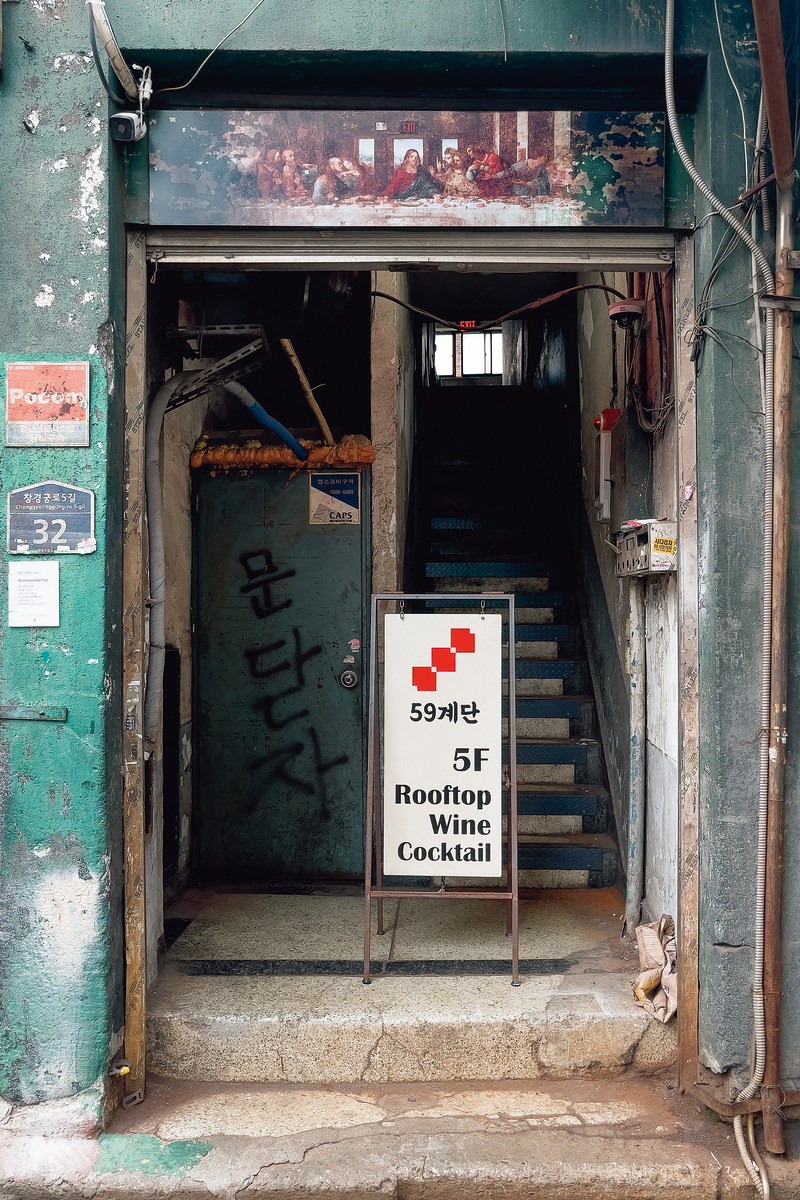
59 Stairs Wine Bar, 5th Floor, 130-1 Sallim-dong. Byun Kyoung-rang. 2021. Pigment Print. 51 × 34 cm.
One of the works on display at Euljiro 2021, a photo exhibition by the Seoul Archive Photographers Group held at Y ART Gallery in Chungmuro in 2021. Byun Kyoung-rang showcases where the past and present intersect, with a focus on Euljiro’s new restaurants.
© Byun Kyoung-rang
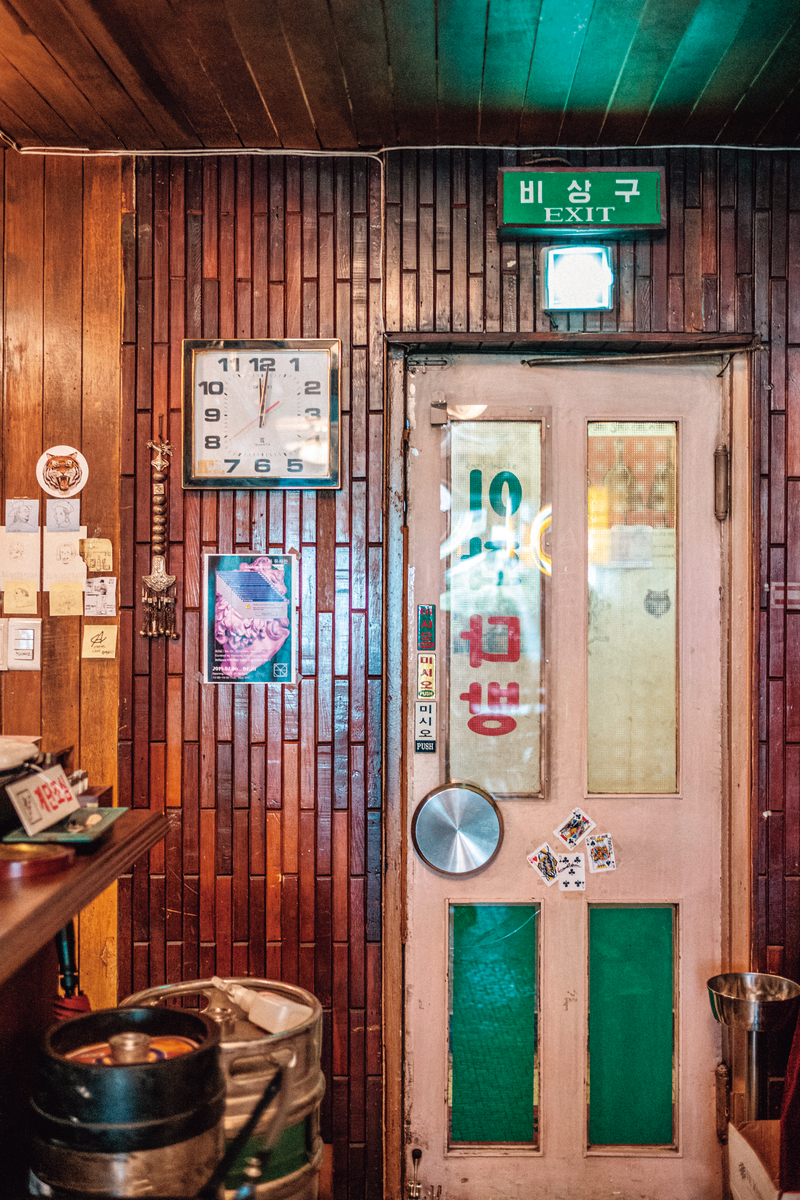
Café and bar Ace Four Club replaced a 60-year-old coffee house near Euljiro 3-ga Station. The new owner chose to preserve vestiges of the past, such as the front door, for the sake of old regulars.
© Seol Dong-ju
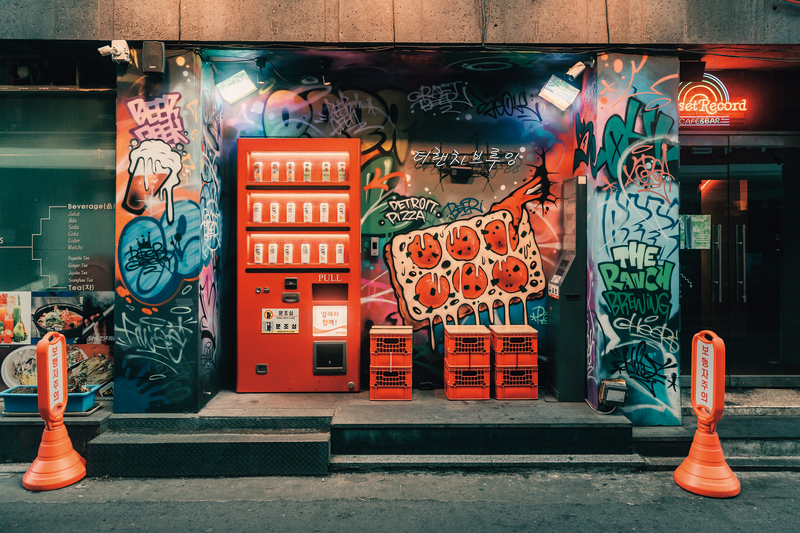
A hotspot among young visitors, The Ranch Brewing sells craft beer and pizza in an alleyway behind Euljiro 3-ga Station. Its colorful mural and entrance, resembling a vending machine, catch the attention of passersby.
© Seoul Tourism Organization